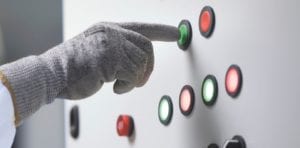In today’s always-on business environment, it is vital to mitigate risks that could impact electrical reliability. Like any engineered system, electrical power distribution systems cannot be designed and constructed to operate 100% of the time indefinitely. NFPA 70B states that: “Electrical equipment deterioration is normal, and equipment failure is inevitable. Unchecked, the deterioration process can cause malfunction or [power system] failure.” Put another way, ‘check’ on the condition of your power system to reduce the potential for downtime! Why? Because there is an indirect relationship between risk and reliability. As risks increase, reliability decreases and vice versa.
Have questions? Ask an expert.However, despite the importance of having a reliable flow of electricity, over half of building owners rely on reactive maintenance programs to care for their equipment. This means they wait until equipment fails completely before initiating corrective action, which is typically 3-4 times more costly than proactively maintaining equipment. A good first step to go from being reactive to proactive is having a power system assessment performed to determine the current state and reliability of the electrical system.
The notion of reliability is more of a mathematical probability than an actual physical condition. Without getting too deep into the mathematics, statistical tables and calculations, electrical reliability is measured by its trouble-free time. For example, if a piece of equipment is designed and intended to continuously operate “X” years and it does, it is 100% reliable to “X” years. After that point in time, if there is an occasional breakdown, the reliability beyond the stated time is less than 100%.
In the following basic illustration, think of each piece of equipment as one in a series, each with its own reliability rating (%). At first glance, it appears the series, i.e., the power system is 90% reliable, right? Actually, the reliability for this simple scenario is: 0.9 x 0.9 x 0.9 x 0.9 = .656 or 66%.
Drop the reliability of one device to 70% due to lack of maintenance and the total system reliability plummets: 0.9 x 0.9 x 0.9 x 0.7 = .51 or 51%
Now consider a facility’s increasingly complex, connected electrical infrastructure consisting of:
|
|
To accurately calculate reliability ratings for the entire electrical power system, all maintenance and testing records are required for each system component, as well as updated system documentation. It’s worth noting that very few electrical maintenance or contracting companies can perform all the recommended electrical maintenance necessary for every piece of electrical equipment within the facility. As such, locating reports in dissimilar formats from different service providers may pose a problem.
If this scenario sounds familiar, a power system assessment is a viable option to establish the current condition of the electrical system. Performed by a professional engineer, a power system assessment also: 1) determines the vulnerability of a facility or process to the adverse effects of unplanned downtime; and 2) establishes a baseline for future maintenance and testing, upgrade and/or expansion activities. More importantly, safety and compliance issues are also identified. Carrying out the corrective recommendations (if any) will reduce risks which positively impacts electrical reliability.
Contact us for more information on maximizing electrical reliability or if you have questions on the power system assessment process.




Conversation
This is a good information for me. I have never planned for electricity facility assessment. I mean in overall. The principle is clear and easy to understand. Reliability supply and safety improvement are two obvious purposes.